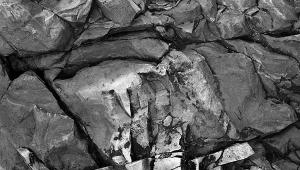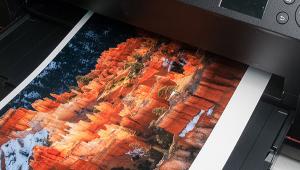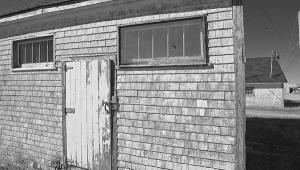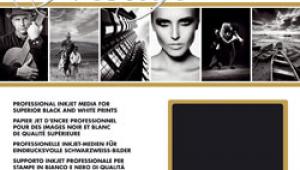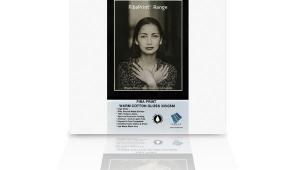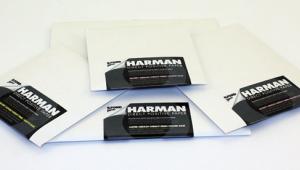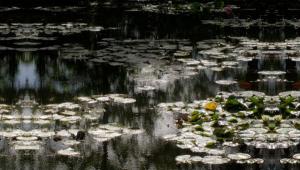Ilford Multigrade Art 300: A New & Exciting Multigrade Silver Paper
Ilford’s new Multigrade Art 300 (MGA 300) paper is a completely new, different, silver halide, wet-process printing paper: the company’s first new paper in 13 years. The tonality is rich and subtle, and the feel of the prints is incomparable. As a bonus, it is perfect for handcoloring.
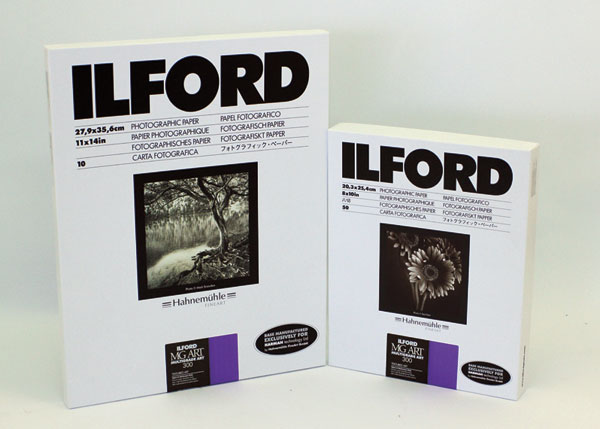
Texture and “feel” may sound like a strange place to start to sing a paper’s praises, but when someone hands you a print on MGA 300, it’s like being handed an 18th-century engraving. The secret is a very heavy (300 gsm) pure cotton rag paper base, especially made by Ilford’s partner Hahnemühle, without a baryta coating. Baryta is the barium sulphate layer between the paper base and the gelatin. To quote the 1965 Focal Encyclopedia of Photography, “Its main purpose is to provide a smooth white chemically inert base.” It provides a barrier between the paper base (with its possible impurities) and the emulsion, as well as stopping “poke-through,” where the fibers of the paper literally poke through the emulsion.
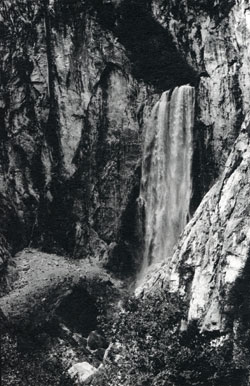
All Photos © Roger Hicks Ltd.
If you are good enough at making paper (Hahnemühle is), you can however make a chemically neutral paper with no poke-through. This is what MGA 300 is coated on. The surface texture is described by Ilford as “eggshell.” This is as good a description as any, but it is effectively impossible to communicate the sheer tactile pleasure of handling prints on this paper.
None of this would matter if the tonality were unremarkable, but again, it is a joy. It reminds me of platinum prints. As measured with a densitometer, the maximum density is surprisingly low (under 1.6, largely because of the “eggshell” surface), but the subtlety of tone between maximum black and paper-base white is incredible.
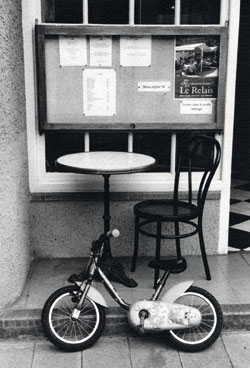
The new paper is fully compatible with all other Multigrade papers in filtration and development. Grades run from 00 to 5, corresponding to ISO(R) values of 170 (00) to 50 (5). But although it shares the same genes, it doesn’t look the same. Somehow, it’s just better. In the 1980s, Multigrade quality caught up with graded paper. With MGA 300, it has decisively overtaken any graded paper I have ever tried. It’s that good. Again, it is impossible to communicate in reproduction what I mean: photomechanical reproduction will never do it justice. You have to try it for yourself.
Before you do, though, it is worth entering three warnings. First, it does not scan well. It is superb for exhibition prints, but the texture picks up on most scanners as a “speckle” or “sparkle,” especially in the dark areas. It probably won’t show in repro here, but for maximum-quality art repro, you would need to photograph MGA 300 as carefully as if you were photographing an oil painting, right down to using crossed polarizers.
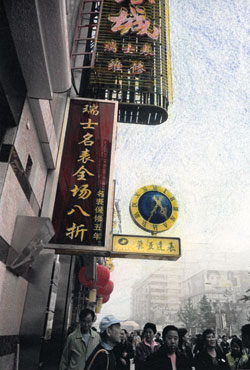
Second, this is not a paper for the novice. If you are learning (or plan to scan the prints), stick with Multigrade RC. MGA 300 needs careful handling when wet—neither the emulsion nor the base are as tough as conventional paper and the cotton rag base needs more washing than RC paper, though less than most FB papers. I use the Ilford-recommended sequence of (at least) five minutes first wash, 10 minutes in Ilford Wash Aid with occasional agitation, and (at least) five minutes final wash. Then I dry it between photographic blotters.
The “at least” is because a few minutes extra will not matter, but equally, you do not want to leave it in the water too long or it will get soggy: it is, after all, made of cotton. For wash times, therefore, Ilford takes the unusual step of specifying both a minimum (30 minutes) and a maximum (45 minutes) in running water above 5˚C, 41˚F. Also, because the paper tends to float, you need to make sure that it is (a) actually under water and (b) not sticking together.
Other notes on processing are pretty minor. You get maximum image warmth with Ilford Multigrade or Bromophen developers (recommended times: 90 seconds to three minutes); a stop bath is highly recommended, because carry-over of developer is quite high; and then all you need is one minute in film strength (1+3) Ilford Rapid Fixer or Hypam. Film strength fixer is all but essential because this is a paper designed for minimum wet time: it’s the cotton fibers getting soggy again. This is why lith processing is a bad idea, too: with 20-minute development times, the paper is wet for too long. Besides, the only time I tried it, I got quite bad fogging.
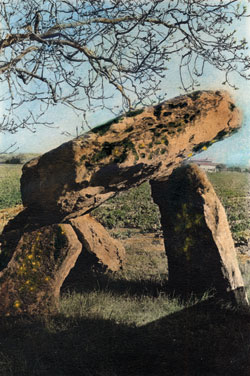
Hardening fixers are specifically discouraged, partly for washing efficiency, partly because of possible reductions in toner performance, and partly because of a probable cooling of image tone. Light selenium or other archival toning is recommended for display prints. Processing information is available on a PDF file downloadable from www.ilfordphoto.com.
On a purely personal note, I found myself pre-flashing more than usual, but this is probably because I like long tonal ranges and “plucky” (generously developed) negatives. Trying the paper with a wide range of negatives I found it incredibly forgiving and flexible. I won’t say it’s impossible to get a bad print, because that is always easy, but I found it to be one of the best papers I have ever used for getting good prints, easily.
To sum up, therefore, MGA 300 is a remarkable blend of old and new technologies, though the old technologies are so highly refined as to be all but unrecognizable as compared with even 50 years ago. Better still, it is only slightly more expensive than Multigrade FB Warmtone, which until now has been the paper against which I judged all others. Arguably, Multigrade FB Warmtone and MGA 300 are sufficiently different so that you can’t really compare them; but I do, and MGA 300 wins.
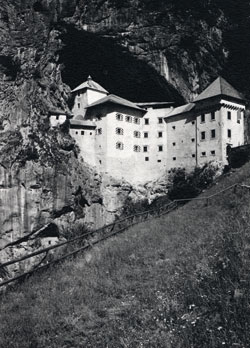
There is, however, an (almost literal) icing on the cake. As I said at the beginning, it is perfect for handcoloring. The eggshell finish provides a perfect tooth for all the media I have tried so far. It is particularly suitable for my current favorite colored pencils, but I’ve also tried it with SpotPens and Marshall’s Transparent Photo Oils. If you are into handcoloring, this has to be one of the finest papers ever made. And if you’re not: well, it’s still one of the finest papers ever made. In fact, I’d go further and say that it is the finest.
For more information, contact Ilford Photo at: www.ilfordphoto.com.
- Log in or register to post comments
